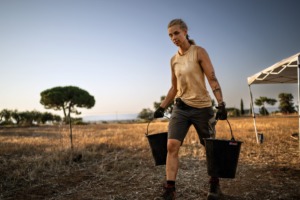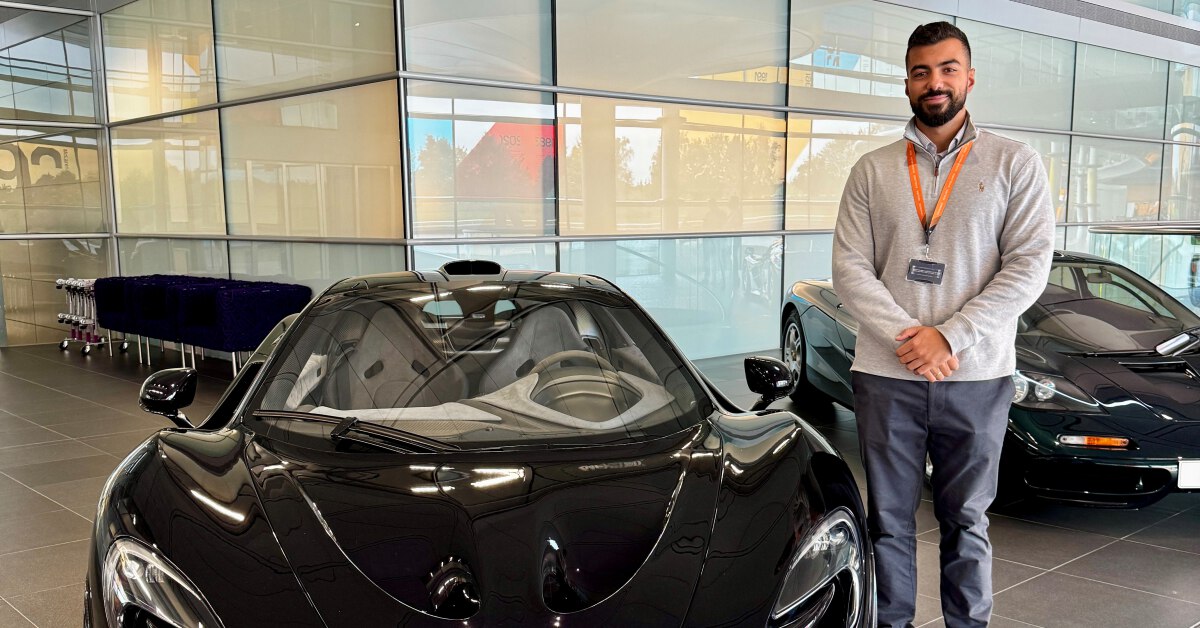From taxidermy to forensic investigation: My journey at Cranfield
13/03/2025

Christina Recheis completed her MSc in Forensic Investigation at Cranfield University in 2021 and specialised in forensic archaeology and anthropology. Her master’s thesis focused on developing an algorithm to facilitate the identification of human remains, reflecting her commitment to advancing forensic methodologies.
Here Christina shares her student journey at Cranfield to her career now working as a Terrestrial Project Archaeologist and what advice she’d give to new students.
Before starting my postgraduate journey at Cranfield University, I completed my undergraduate degree in Biology at the University of Innsbruck. Alongside my studies, I worked at a taxidermist, helping to curate a zoological and osteological collection. This hands-on experience sparked my interest in human remains and forensic science, ultimately leading me to pursue a career in forensic anthropology and archaeology.
I knew that gaining practical experience would be essential if I wanted to work in the field or secure a role in a forensic laboratory. That’s when I started looking into postgraduate study and found Cranfield University’s Forensic Investigation MSc. It offered exactly what I was looking for — a perfect blend of laboratory-based and fieldwork experiences.
Relocating to the UK for full-time study was a big step, but Cranfield’s course structure made the decision easy. The programme covers both forensic anthropology and archaeology, allowing students to shape their learning around their career goals. The brand-new Cranfield Forensic Institute (CFI) at the Bedford campus was also a huge selling point. Visiting the campus and meeting the lecturers confirmed my choice — their passion and expertise were exactly what I was hoping to learn from.

The Mass Fatality Incidents module at Cranfield was incredible and really opened my eyes to possible study areas, careers and networks of expert professionals.
The course itself exceeded my expectations. One of the standout modules was the mass fatality module — something I hadn’t considered before but turned out to be incredibly impactful. We heard from professionals with extensive field experience, which brought the learning to life. Additionally, having lecturers who have worked directly in forensic cases added a level of practical knowledge you just can’t get from textbooks.
Cranfield also offered plenty of hands-on learning. I particularly valued the practical modules, which allowed me to apply theoretical knowledge in real-world scenarios. Beyond that, I was fortunate to join with the CRICC group (Cranfield Recovery and Identification of Conflict Casualties), giving me the chance to continue fieldwork even after submitting my thesis. This experience was invaluable in shaping my career path.
Since graduating in 2021, I’ve gone on to work in a forensic laboratory and continue to collaborate with CRICC. My experiences and the network I built at Cranfield have opened doors I never imagined possible. Recently, I started working as a Terrestrial Project Archaeologist for the HJF, assisting the DPAA (Defense POW/MIA Accounting Agency) in recovering missing-in-action American soldiers from past conflicts. This role was a career goal of mine, and I genuinely believe my time at Cranfield played a major role in getting me here.

Getting to work in the field is exhausting, but an amazing experience Image © Harvey Mills
For anyone considering a career in forensic science, I can’t recommend this course enough. It’s ideal for those who want a practical, hands-on learning experience and aren’t quite sure which forensic path they want to follow. The broad range of modules helps you find your niche and build the skills you’ll need to succeed.
If you’re thinking about postgraduate study — do it. It’s hard work, but it pays off. Push yourself, say yes to every opportunity, and stay determined. The connections you make and the experience you gain could lead you to incredible career opportunities, just like it did for me.
Images courtesy of Cranfield University and Harvey Mills ©
Categories & Tags:
Leave a comment on this post:
You might also like…
Study better and smarter in 2026
Happy new year! Now is the perfect time to reflect on your studies so far, thinking about what you’re doing well and where you need to focus a bit more attention. Getting back into ‘study ...
Cleared for the future: Why aviation leaders must embrace environmental sustainability
Environmental sustainability is not a niche concern for aviation anymore, it’s central to how we think about the future of our industry. In my work as an Associate Professor of Airport Decarbonisation, I see first-hand ...
Preparing your work for Turnitin submission
Before submitting your work into Turnitin for similarity checking, if you have used referencing software then you may need to take some important steps first. Mendeley and Zotero integrate with MS Word by embedding field ...
The fast track to supercar engineering: My Cranfield journey
It’s been a dream come true to work on some of the world’s most prestigious supercars – the Aston Martin Valhalla, McLaren 750 & Artura, the GMA T.33. But every successful ...
Automotive Engineering: From student to hypercar innovation at Rimac
We sat down with recent graduate Thomas Perrin, to discuss how his year on the MSc in Automotive Engineering at Cranfield University propelled him from the lecture hall directly into the ...
What this year at Cranfield really meant to me
Every Cranfield journey is unique. In this alumni reflection, Zachea Scicluna shares what her year at Cranfield truly meant, from facing uncertainty to gaining hands-on experience in industry-backed projects. I’ve been reflecting (and delaying) ...







